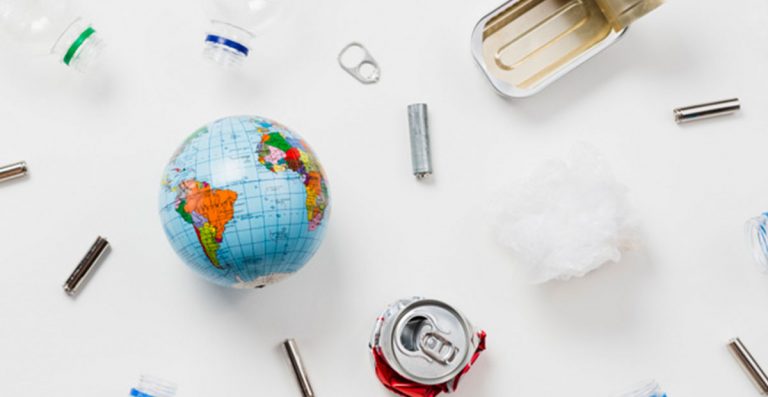Plastics -The Material of the Century
This blog focuses on how the use of plastics has become such an integral part of our daily lives. This article is further divided into two blogs-
The plastics industry is one of the most innovative sectors of the modern economy. The popularity of this industry has kept the industry growing for 50 years. What makes this industry a success is that it leaves almost nothing to be desired – even in view of our society’s globally important tasks.
Challenges such as increased energy demands, population growth, scarcity of resources, climate change – which were previously unknown to mankind require the use of creative minds and equally creative materials to come up with the necessary innovations. Synthetic materials or plastics (polymers) significantly contribute to fulfilling existing as well as future demands.
Imagining a World without Plastics
The plastics industry is rapidly evolving. In 1950, the production of plastic was only 1.5 million tons and last year approximately 280 million tons of plastics were produced. The biggest reason for this development is the limitless possibilities of turning ideas into tangible innovations with the help of plastics.
Therefore based on the ‘pars-pro-toto’ principle the diversity of plastics and their applications can be highlighted with a focus on a few important application areas.
Plastics as a Quintessential Packaging Material
Packaging is undoubtedly one of the biggest areas for the application of synthetic materials. This flexible, tear-proof and intelligent wrapping material promises the safe and efficient transport of food products. Excellent examples are polyethylene (PE) films, a material with a good moisture barrier, or from polyamide (PA), which provides a good oxygen barrier. Materials such as PE/PA can be used to create films of varying thickness for the packaging of foods, making these packaged items resistant to water vapor and nearly impermeable to air. For instance, spices that are wrapped in a PE/PA film retain their aroma without forming clumps.
The polyethylene (PET) bottle is another great example of the use of plastics as packaging materials. Its significantly lower weight is the biggest advantage of the PET bottle in comparison to the conventional glass bottle. Because of the low weight of the PET bottles, the cargo hold of a truck can be fully used without overloading the vehicle. This presents a significant economical as well as ecological advantage.
Plastics Safely Transporting Drinking Water and Waste Water without Losses
Drinking water pipes are usually made of different materials, such as plastics, metals and composite materials. Apart from steel, underground pipes are also made of polyethylene pipes (PE-pipes) or pipes made from polyvinyl chloride (PVC). Because of their quick and simple installation, the application of plastic pipes is common.
When it comes to age-related damages on underground pipes and sewers, repair methods which do not require digging that cause damage to streets and sidewalks are preferred. Different methods are available such as the insertion of partial liners or flexible pipe or tube strands. Usually the repair work involves the insertion of a synthetic tube impregnated with synthetic resin (epoxy resin or polyurethane resin) or a flexible tube made of polyethylene or polypropylene into the damaged pipe for the leaks to be sealed.
This article will be continued in the second blog that will also focus on important plastic applications.
Leave a Reply Cancel reply
Recent Posts
- Understanding The Materials That Are Used To Build Plastic Toys
- All You Need To Know About Food-grade Plastics
- A Glance At The Materials That Boost The Performance Of Plastics
- Understanding The Importance Of Exploring New Business Opportunities In The Plastic Industry
- Understanding The Importance Of Investing in R&D For The Plastic Industry
Categories
- 3D Printing
- AIPMA
- Automation
- Automobile Sector
- Bio Plastics
- Environment
- Innovations In Recycling
- Latest Innovations
- Molds & Dies
- News
- Packaging Industry
- Plastic
- Plastic Application
- Plastic Industry
- Plastic Market
- Plastic Myths
- Plastic News From The World
- Plastic Packaging
- Plastic Products
- Plastic Recycling
- Plastic Solar Cells
- Plastic Toys
- Plastic Waste
- Plastic World
- Plastics
- Plastics And Their Applications
- Plastics In Agriculture
- Plastics In Healthcare
- Plastics In Medical Industry
- Plasticulture
- Processing Machinery
- Recycling Machines
- Robotics
- Uncategorized
- Virtual Reality
Archives
- November 2023 (3)
- October 2023 (2)
- September 2023 (3)
- August 2023 (3)
- July 2023 (3)
- June 2023 (3)
- May 2023 (2)
- April 2023 (2)
- March 2023 (2)
- February 2023 (2)
- January 2023 (2)
- December 2022 (3)
- November 2022 (1)
- October 2022 (1)
- September 2022 (2)
- August 2022 (1)
- July 2022 (3)
- May 2022 (3)
- March 2022 (2)
- February 2022 (1)
- January 2022 (1)
- September 2021 (2)
- August 2021 (3)
- July 2021 (4)
- June 2021 (4)
- May 2021 (3)
- April 2021 (2)
- March 2021 (4)
- November 2019 (8)
- October 2019 (8)
- September 2019 (8)
- August 2019 (8)
- July 2019 (8)
- June 2019 (8)
- May 2019 (8)
- April 2019 (8)
- March 2019 (8)
- February 2019 (11)
- January 2019 (8)
- December 2018 (8)
- November 2018 (12)
- October 2018 (12)

